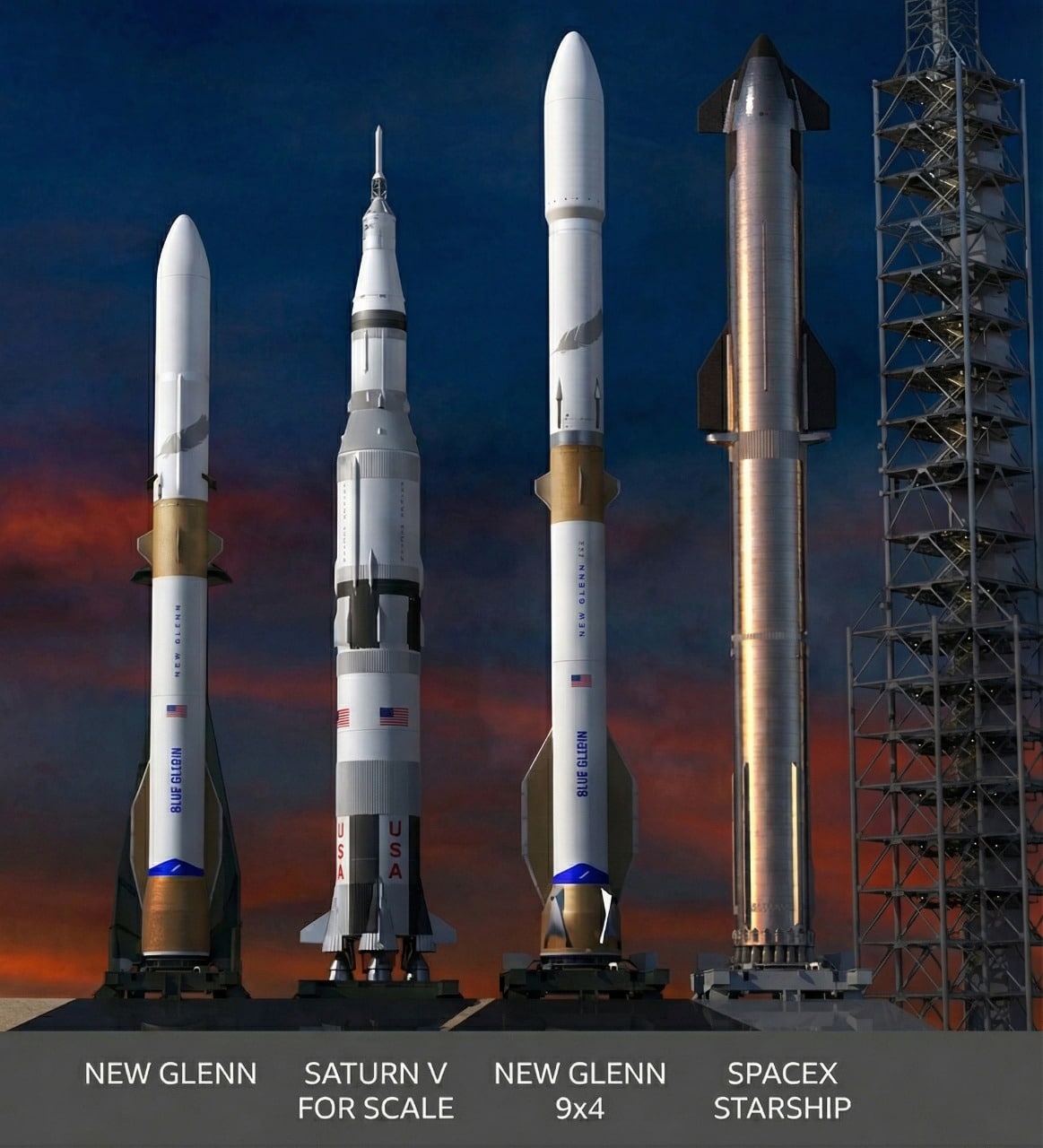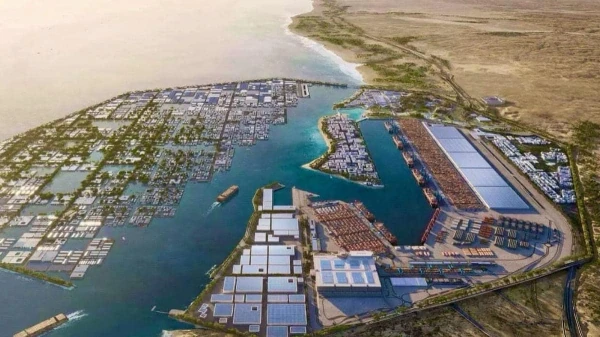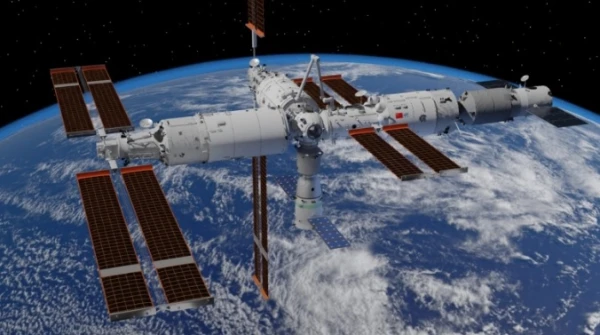
The launch vehicle will be named after John Glenn - the first American to orbit the Earth.
Ten years ago, a revolution occurred in global rocketry: orbital launch vehicles became partially reusable as their first stages began to land back on Earth. Although this scheme was first proposed by the Korolev Design Bureau half a century ago, it did not attract interest in Russia. However, it was implemented by Elon Musk's company (the Falcon 9 rocket).
Other players began launching similar programs: for example, in Russia, a rocket with a Falcon 9-like scheme was named "Soyuz-7." But the American company Blue Origin was the quickest to replicate this scheme. In November 2025, it succeeded in copying Musk's approach after just 10 years and landed the first stage of its new heavy rocket, New Glenn.
However, during the decade that Bezos's company was copying the Falcon 9 scheme, SpaceX went even further and began testing Starship. Competing with a large rocket that already has two reusable stages using a much smaller and only partially reusable rocket is challenging. Therefore, Blue Origin adjusted its plans for new launch vehicles: it now plans to increase New Glenn's capacity. Currently, its payload to low Earth orbit is only 45 tons, but after the increase, it will reach 70 tons.
To achieve this, the first stage will carry nine engines instead of seven methane engines of its own design, and the second stage will have four engines instead of the current two hydrogen engines. To distinguish today's configuration from the future one, the first was named 7×2, and the second — 9×4.
The company stated that the new rocket will be able to deliver more than 20 tons on a trajectory to the Moon, and the size of the nose cone will reach 8.7 meters in diameter. This is a significant increase compared to the current New Glenn, which has a cone only seven meters. The thrust of the BE-4 methane engines of the rocket is planned to be increased from 2.45 to 2.85 meganewtons, and the thrust of the second stage BE-3U engines will also be raised by a quarter.
Although the developer's official statement did not specify timelines, industry sources predict the first flight of the new enlarged rocket as early as 2027. This is quite ambitious, as Blue Origin has been around since 2000 (it was established before SpaceX), but it only conducted its first orbital launch this year, a quarter of a century after its founding. Creating a new super-heavy class rocket even based on the existing heavy one in just two years is extremely challenging.
Among the goals of the new, larger rocket, the company identified providing its customers with "mega-constellations" of satellites, flights to the Moon and deep space, as well as military programs like the "Iron Dome." From other sources, it is known that traditional American space players have recently shown interest in the company's rockets in terms of launching the Orion spacecraft. Today, it can only be launched by the SLS rocket, but due to the typical high corruption and inefficiency of traditional players, it is so expensive that its use is highly likely to end in the 2020s.

From left to right: the current New Glenn, also known as 7x2, von Braun's lunar rocket "Saturn V," the future New Glenn, also known as 9x4, Starship. It is easy to see that although it is comparable in height to New Glenn, the diameter of the SpaceX rocket is larger, and the material (stainless steel) allows its second stage to be reusable, which is unrealistic for the aluminum second stage of New Glenn.
The likely reason for the sharp increase in the ambition of Blue Origin's plans is a change in leadership. Bezos brought in a person from Amazon to head it, in other words, a manager without roots in traditional American space companies known for their inefficiency in the post-Brown era.
However, it remains questionable how much a new person without experience in the space sector will be able to replicate Elon Musk's success. The latter performs the role of chief engineer in his company, which cannot currently be said about the manager from Amazon. So far, there are no clear plans for creating a second reusable stage for New Glenn. And without it, successful commercial competition with SpaceX is impossible. However, it is possible that Blue Origin is currently not aiming for that but for servicing government contracts, hence the mention of non-commercial goals for the new super-heavy rocket.















Leave a comment